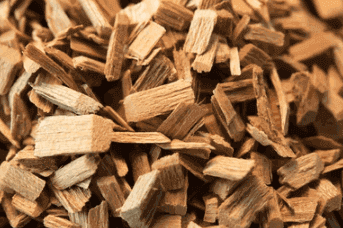
All About Apple Wood: Origins, Benefits, and Cooking Techniques
It is a unique and versatile option for enhancing the flavor of your culinary creations. In this article, we’ll delve into the origins of apple wood, its numerous benefits, and various cooking techniques that make it a favorite among chefs and food enthusiasts.
Table of contents
- What is apple wood?
- Its Origins
- Apple Tree Characteristics
- Harvesting Process
- Benefits of Using Applewood
- Flavor Profile
- Health Benefits
- Applewood Cooking Techniques
- Grilling
- Smoking
- Baking
- Choosing the Right Applewood
- Tips for Cooking with Applewood
- Preparing Wood Chips
- Cooking Temperatures
- Popular Applewood Recipes
- Applewood-Smoked Pork Ribs
- Applewood-Grilled Chicken
- Comparing Applewood to Other Woods
- Apple Wood vs. Oak
- Apple Wood vs. Hickory
- Environmental Considerations
- Conclusion
- FAQs
What is apple wood?
It is the aromatic wood sourced from apple trees. Renowned for its subtly sweet and fruity flavor, it’s a prized choice for grilling, smoking, and even baking. This natural, chemical-free wood enhances the taste of dishes, making it a favorite among culinary enthusiasts.
Apple Wood Origins
Characteristics of Apple Tree
As the name suggests, apple wood comes from apple trees. Apple trees are known for their distinctive fruit and are native to Europe and Central Asia. They belong to the Rosaceae family and are prized not only for their delicious apples but also for the quality of wood they produce. Applewood is revered for its mild, sweet aroma and its ability to infuse a subtle fruitiness into food when used for smoking or grilling.
Harvesting Process
To obtain applewood, trees are pruned, and the cut branches and twigs are typically used. This sustainable harvesting process ensures a continuous supply of applewood while preserving the health of the apple trees. The wood is then seasoned to reduce moisture content, making it ideal for cooking.
Benefits of Using Apple Wood
Flavor Enhancement Enhances taste with its sweet and fruity notes, elevating the profile of your culinary creations.
2. Health consciousness A natural, chemical-free option reduces the need for heavy sauces and marinades, promoting healthier cooking.
3. Versatility Ideal for grilling, smoking, and baking, it adds a unique twist to various dishes.
4. Gentle Smoke It imparts a mild, aromatic smoke, perfect for meats, poultry, and even desserts.
5. Safe Cooking Free from additives, making it a safe choice for enhancing the flavors of your food.
6. Subtle Sweetness It creates a delicate sweetness that complements a wide range of ingredients.
7. Delightful Aroma It infuses a pleasant, fruity aroma, enhancing the overall dining experience.
8. Eco-Friendly Harvested sustainably, minimizing the environmental impact and ensuring a renewable resource.
9. Unique Flavors Offers a distinct taste compared to other wood varieties like oak and hickory.
10. Culinary Innovation A go-to choice for innovative cooking, making your dishes stand out with a touch of sophistication.
Apple Wood Cooking Techniques
It can be used in various cooking techniques, each adding its distinct touch to your dishes.
Grilling
When grilling with applewood, you can use applewood chips, chunks, or planks. It imparts a sweet, smoky flavor that pairs exceptionally well with poultry and pork. The wood chips are soaked in water before use, creating a delightful smoke that flavors your food as it cooks.
Smoking
Smoking with it is a favorite method among barbecue enthusiasts. The gentle, fruity smoke infuses meats, such as ribs and brisket, with a mouthwatering taste. The slow smoking process ensures the flavors penetrate deep into the meat, creating a unique and tender dining experience.
Baking
It is not limited to savory dishes. You can also use it for baking. It works particularly well with pastries and desserts, giving them a subtle sweetness that complements various ingredients like apples, pears, and nuts.
Choosing the Right Apple Wood
Selecting the right type of apple wood is crucial for achieving the desired flavor in your dishes. Different apple wood varieties can vary slightly in taste, so it’s essential to experiment and find the one that suits your palate best.
Tips for Cooking with Apple Wood
Preparing Wood Chips
Before using apple wood chips for smoking or grilling, it’s advisable to soak them in water for about 30 minutes. This prevents the chips from burning too quickly, allowing for a consistent release of aromatic smoke.
Cooking Temperatures
Maintaining the right cooking temperature is essential when using it. It’s best to keep the temperature between 225°F and 250°F for smoking and grilling. This ensures the wood imparts its flavor without overpowering the dish.
Popular Apple Wood Recipes
Apple Wood-Smoked Pork Ribs
One of the classic dishes made with it is smoked pork ribs. The sweet and smoky flavor perfectly complements the tenderness of the meat. This recipe is a favorite at summer gatherings and barbecue parties.
Apple Wood-Grilled Chicken
Applewood-grilled chicken is a delightful dish for those who prefer a healthier option. The mild fruitiness of the wood enhances the taste of the chicken, making it a crowd-pleaser.
Comparing with Other Woods
Apple Wood vs. Oak
Compared to oak, apple wood has a milder flavor profile with fruity undertones. It’s a great choice for those who want a more subtle smokiness in their dishes.
Apple Wood vs. Hickory
In contrast to hickory, applewood imparts a sweeter taste. While hickory can be quite robust, applewood offers a gentler flavor, making it more suitable for delicate dishes.
Environmental Considerations
- Sustainable Harvesting: Responsible practices ensure a continuous supply of this unique resource without depleting the source.
- Preserving Ecosystems: By supporting proper wood sourcing, we safeguard the habitats and biodiversity of our forests.
- Reduced Carbon Footprint: Locally sourced and minimal processing contribute to a smaller carbon footprint.
- Renewable Resource: With well-managed apple tree populations, we ensure a renewable and eco-friendly choice.
- Minimal Waste: Efficient use of every part of the tree minimizes waste and promotes resource efficiency.
- Positive Impact: Opting for eco-conscious choices in cooking contributes to overall environmental well-being.
- Rethinking Alternatives: By choosing sustainable options, we inspire others to rethink their consumption choices.
- Long-Term Viability: Ensuring that apple trees thrive for future generations secures the long-term viability of this unique resource.
- Eco-Friendly Practices: Supporting sustainable practices encourages a more eco-friendly culinary approach.
- Holistic Approach: Recognizing the connection between nature and our cooking choices fosters a holistic perspective on sustainability.
Incorporating these environmental considerations into our culinary practices helps us not only enjoy the benefits of this unique resource but also sustain the ecosystems that provide it.
Conclusion
It is a culinary gem with a rich history and a wide array of benefits. Its origins in the apple tree, delightful flavor profile, and adaptability in various cooking techniques make it a favorite among chefs and food enthusiasts. By choosing the right type of applewood and following essential tips, you can unlock the full potential of this natural flavor enhancer. So, why not give it a try and elevate your culinary creations to a whole new level?
FAQs
- Is apple wood suitable for all types of meat?
- It complements poultry, pork, and fish exceptionally well, but it can be used with other meats too.
- Can I use apple wood for grilling vegetables and fruits?
- Absolutely! It can add a unique twist to grilled fruits and vegetables, enhancing their natural flavors.
- What’s the best way to store apple wood for future use?
- Store apple wood chips or chunks in a cool, dry place to maintain their quality.
- Are there different varieties of apple wood with distinct flavors?
- Yes, it can vary slightly in flavor depending on the specific apple tree variety.
- Is apple wood a sustainable choice for cooking?
- Yes, when harvested sustainably, it is an eco-friendly and renewable resource for cooking.





